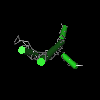?
 
Inhibitor of growth (ING) domain family The Inhibitor of growth (ING) family includes a group of tumor suppressors, ING1-5, which act as readers and writers of the histone epigenetic code, affecting DNA damage response, chromatin remodeling, cellular senescence, differentiation, cell cycle regulation, and apoptosis. They may have a general role in mediating the cellular response to genotoxic stress through binding to and regulating the activities of histone acetyltransferase (HAT) and histone deacetylase (HDAC) chromatin remodeling complexes. All ING proteins contain an N-terminal leucine zipper-like (LZL) motif-containing ING domain that binds unmodified H3 tails, and a well-characterized C-terminal plant homeodomain (PHD)-type zinc-finger domain, which binds lysine 4-tri-methylated histone H3 (H3K4me3). Although these two regions can bind histones independently, together they increase the apparent association of the ING domain for the H3 tail. The ING family also includes three yeast orthologs, chromatin modification-related protein YNG1 (Yng1p), YNG2 (Yng2p), and transcriptional regulatory protein PHO23 (Pho23p). Yng1p, also termed ING1 homolog 1, is one of the components of the NuA3 histone acetyltransferase (HAT) complex. Yng2p, also termed ESA1-associated factor 4, or ING1 homolog 2, is a subunit of the NuA4 HAT complex. It plays a critical role in intra-S-phase DNA damage response. Pho23p is part of Rpd3/Sin3 histone deacetylase (HDAC) complex. It is required for the normal function of Rpd3 in the silencing of rDNA, telomeric, and mating-type loci. Yng1p and Pho23p inhibit p53-dependent transcription. In contrast, Yng2p has the opposite effect. |
